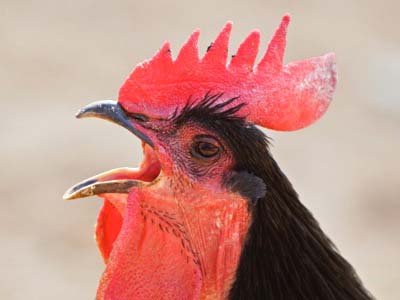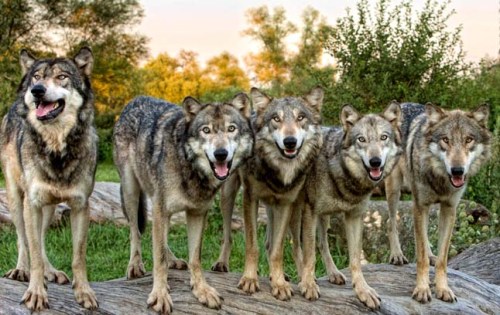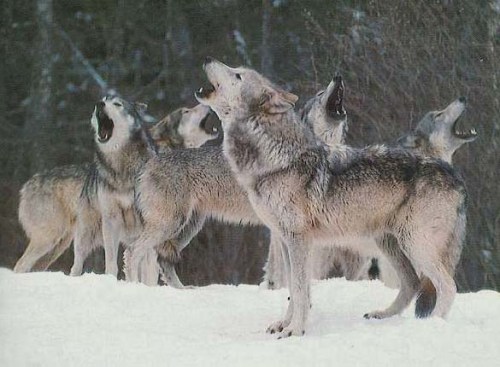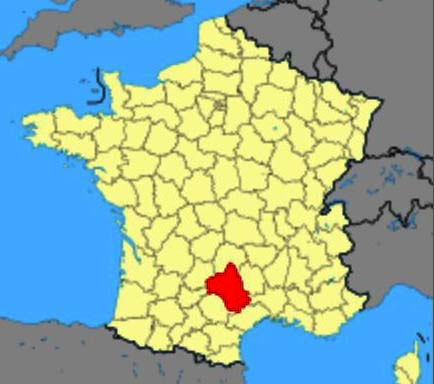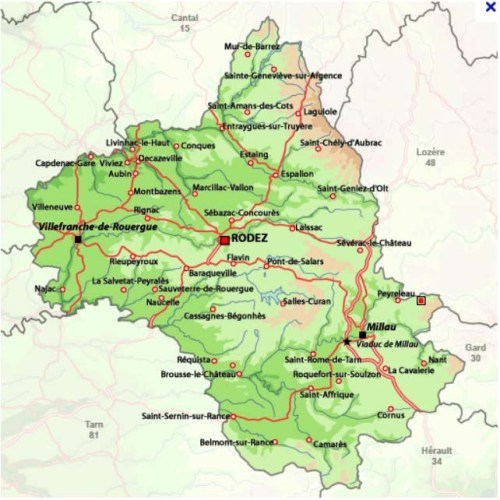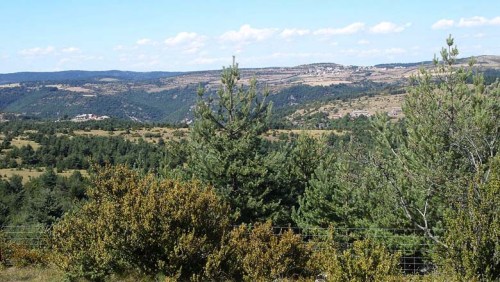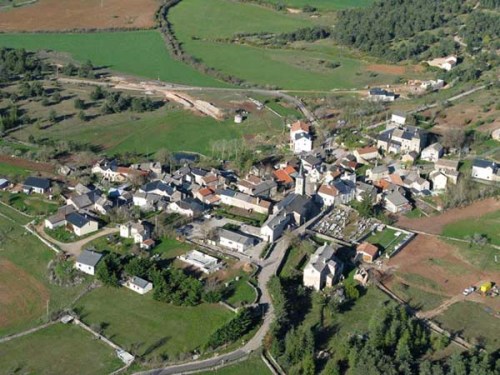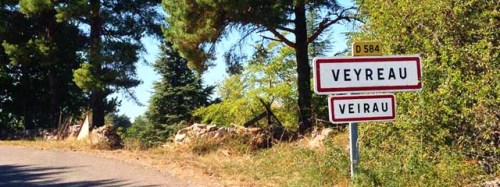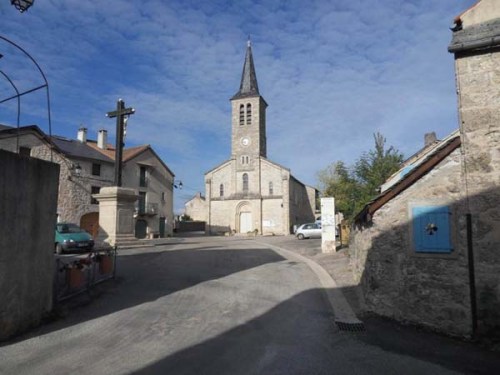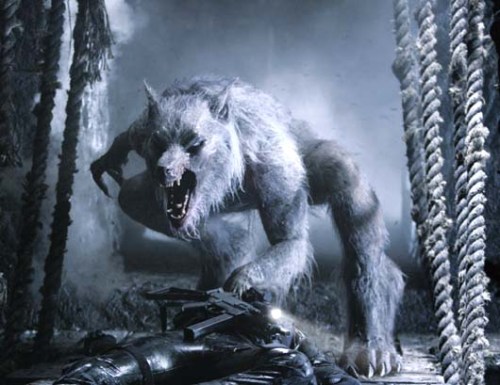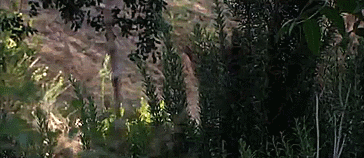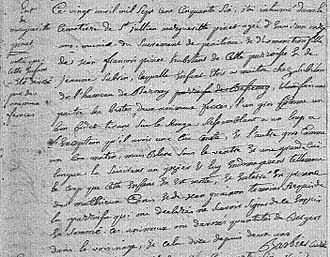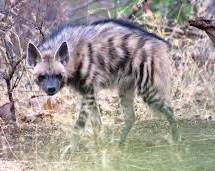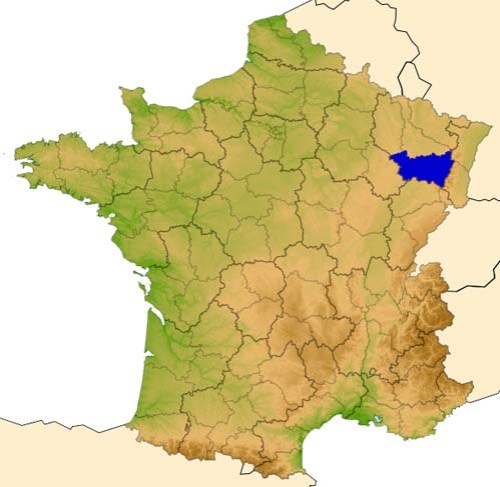I think that I have established by now, in a long series of articles, that large numbers of innocent people in France were being attacked, and frequently eaten, by wild creatures of some sort from the late 1400s possibly right up to the end of the nineteenth century.
My eagerly awaited conclusion to all this is that we are dealing here with an unknown creature which was essentially a wolf type animal and which is now extinct. It lived in thick forests and deep ravines, and behaved in a way so different from a modern wolf that it cannot possibly have been one. It killed and killed again.
Some sources attribute 150 deaths to what they call “just one ordinary, but large wolf”. Impossible! At the same time, “The Prime Suspect” was not necessarily hyper distinctive, and may not have been totally obvious at first sight:

Let’s begin by looking at a list of creatures which could have been this wolf type animal. I have compiled it from as many French Internet sites as I could find! There may be some copying between the websites involved here, but I prefer to think that descriptions which are similar are describing the same species of unknown animal. And don’t forget, most of these monsters are separated by both time and space.
As a rough comparison, a French author, Pascal Cazottes, has found fifteen monsters of this type, carbon copies, more or less, of the Beast of Gévaudan. Here is my contribution to the list:
1500-1510, Fontainebleau. it was supposedly a wolf, a werewolf or a shape shifter. Possibly six individual animals.
1510, Fontainebleau. a lynx, or a hybrid of a wolf and a feline, it devoured young girls and little children.
1595-1598, Vendômois, south/central France, 25 people killed by “wolves”. This was not normal wolf behaviour.
1632 – 1633 and then possibly in 1672, Cinglais, Evreux, Caen, Falaise, Calvados, between 15-30 people killed. It was not a wolf but resembled a large mastiff of enormous speed and agility, capable of leaping across the river. At first sight, it was like a wolf, but was longer, more red, and had a more pointed tail and wider haunches. It was eventually identified as a wolf, but the local peasants had serious misgivings about this middle class verdict.

1633-1634, the Forest of Besnats, Anjou, more than 100 people were mutilated and killed, their bodies lacerated by claws. It was “an enormous beast”.
1650, Fontainebleau, apparently, a female wolf of enormous size, with supposedly more than 600 people killed.
1660, Gâtinais, near Fontainebleau, apparently a huge wolf, it would cross the river to seize children and animals
1690, Forest of Douvres Saint-Riez-en-Belin, Sarthe, there was a report of a child, Cécile Le Boet, devoured by “a fierce creature”
1693-1694, Benais, 200-250 victims. There were several beasts acting in concert which looked like wolves, but had a wider muzzle. They behaved in remarkable fashion, allowing themselves to be patted, but then leaping on the throat of the victim. They appreciated “fresh meat”, and ate the weakest people. It was supposedly a lynx, but lynxes don’t attack human beings:

1691-1702, Orléans, over 60 young victims in fifteen months. A huge beast was killed in the forest and was then picked out from 200 dead wolves. It cannot have been a normal wolf, therefore.
Great Winter of 1709, Orléans, in six months more than 100 people were killed and the same number were wounded. The Beast of Orleans only attacked women and children, and had the same way of moving, the same sharpness and even occasional timidity, as the Beast of Gévaudan. It was covered in scales and no weapon could harm it. A cruel beast, it was thought to be a hyena:

1731-1734, Auxerre, a big wolf or a tiger, “like a wolf, but not a wolf”, with very aggressive behaviour.
1746, Corrèze, an eleven year old boy was killed “by some kind of wolf” called a “mauvaise bête”, an evil beast.
1747-1752, Primarette, seven victims, thought to be a Lynx (see above).
1751, Latillé, Vienne, eight children killed in three weeks.
1751, Benais, supposedly a wolf but the peasants frequently rejected wolf as an explanation. The animal had a wide muzzle, a bigger mouth than a wolf, and was covered in reddish fur, with a black mane, a black stripe between head and tail, a belly that dragged towards the ground and a full tail, which could even be used to strike people. It resembled the Beast of Gévaudan on all counts. It frequently behaved to people like a dog who wanted to be patted, but would then jump up and rip their throat out.

1754-1756, the Beast of Lyonnais, Meyzieu, Savigny, a kind of large wolf with short legs, its skin was spotted with various colours, (“two fierce animals, one like a big pony, reddish, resembling a wolf except for a short tail , the other like a large mastiff , but white on the belly and a big long tail.”)
1763, Dauphiné, the size of a very large wolf, rather light in colour, with a blackish stripe on the back, a belly of dirty white, a very large rounded head a fluffy tuft on the head and next to the ears, a furry tail like a wolf but longer and upturned at the end. It ignored sheep to attack the shepherd boy. Many prominent people, both clergy and nobility, seem to have been totally convinced by the theory that this monster was the very same individual animal as the Beast of Gévaudan.

1764-1767, Gévaudan, witnesses were adamant that the animal was a canid, but not a wolf. It was an animal that they did not know. In addition, wolves cannot have a white breast and underparts. The many witnesses, all accustomed to wolves, spontaneously called it “the Beast”. It resembled a wolf but it was huge, between a calf and a horse in size. Its fur was mostly red, its back streaked with black. It had large dog-like head, a snout like a wolf and a mouth full of large formidable teeth. Its jaws could open very wide and seize a human head. It had small straight ears, smaller than a wolf, which lay close to its head, a strong neck and a wide chest. Its tail was immensely long, and somewhat like that of a panther. It possibly had claws. People struck by the tail said that it was a blow of considerable force.

Professional hunters refused to believe that it was an ordinary wolf. It seemed relatively invulnerable, when hit by bullets, and would always stagger back to its feet. It did not ever fear man. In the face of resistance from the victim, it would retreat, sat down to think, and then renewed the attack. It was very aggressive, much more so than from mere hunger. It was very agile and could jump over high walls. It could perhaps manage some steps on its hind legs. It once attacked a man on horseback…not a wolf’s, or even a bear’s, behaviour.

March-August 1766, Sarlat, 18 victims, it was supposedly a rabid wolf but “rabies is a quick killer” (3-4 days). One wolf of extraordinary size was killed.
When ready to seize its prey, it supposedly put up its hackles, and its eyes became flaming red. It raised itself up on its back legs and tried to seize the victim, often by the head.
1791, Wales, between Denbigh and Wrexham. it was the size of a horse, eating livestock, dogs and men, and even attacked a stagecoach. It was an enormous black beast, almost as long as the coach horses, and was possibly an overgrown wolf. One farmer was found terrified, after witnessing an enormous black animal like a wolf kill his dog. The monster pounded on the door, stood up on its hind legs and looked in through the windows. Its eyes were blue, intelligent and almost human. It foamed at the mouth,
1792, Milan, northern Italy, an ugly beast as big as a dog, but with a horrible mouth. Children said: “a big head with big ears, a pointed snout and large teeth, black and coloured hair on top, whitish underneath, a thick, curly tail”. (with some variation depending on the child). A farmer said “As big as a normal calf, head like a pig, ears like a horse, white hair like a goat underneath, reddish on top, thin legs, large feet, long claws, a large, broad chest and slim flanks.”
It was not a wolf, but was perhaps an exotic animal. “Many have recognized the wolf in the beast, but some argue that it is a different animal.”

1796, Châteauneuf- Brimon region of France, it killed a dozen women and children.
1799, Veyreau, “tens of victims”, the locals thought the Beast of Gévaudan was visiting the region, It was slimmer and more willowy than a wolf and had such agility that it was seen first in one place, but then four or five minutes later in a different place perhaps several miles away. This was possibly evidence of a small population of these animals, or perhaps even some kind of migration or irruption.
1809-1817, Vivarais/Gard/Cévennes, 29 victims, it was the size of a donkey with brown fur, a black mane and large udders. Other witnesses described a creature like a wolf but the size of a calf, with a grey and red coat and black hair over its back. It had a huge belly with white fur, almost dragging on the ground, possibly with tiger/tabby coloured spots. The white fur underneath its body means that it was not a wolf. It had large, long ears, a long muzzle and head and a thick, heavy, luxuriant tail sticking up at the end. Six of its victims were beheaded. It was never captured or killed.
1810, the mountains of Cumberland, England, an unknown creature killed as many as eight sheep a night for six months. The victims had only a few bodily organs removed and eaten, and were drained of their blood. Recent theories have said that this monster was an escaped Thylacine, but my own researches have proved this to be untenable as a valid explanation.
December 6th, 1814, Chaingy, some women and children in the forest were attacked by a she-wolf, with two killed and eight injured. This behaviour is absolutely extraordinary. If it was rabid this was not mentioned when the animal was killed shortly afterwards. For me, definitely “a wolf but not a wolf”:

1817, Trucy, a second carnivorous beast ravaged the forest around Auxerre/Trucy for a few months, at the exact same place as the animal from 1731-1734. It was like “a mastiff dog with pointed ears”
1874, County Cavan and Limerick, Ireland, a mystery animal killed sheep, as many as thirty in one night. Throats were cut, and blood sucked, but no sheep were eaten.
end of the 19th century, Fontainebleau, “a great evil beast which left the forest to attack farm labourers, shepherds and flocks. It attacked children, such as the little girl gathering nuts in the woods or a 9 year old boy devoured at Nanteuil-lès-Meaux.”

1966/7, Vaucluse, Monsieur Henri C., a hunter, killed an unknown animal near a small wood at the edge of the Hautes Alpes. It was the size of a large dog (25 kilos). It had a head like a fox, but a sloping forehead gave it exceptional length. It had pointed ears and formidable fangs. Its fur was short and red, its paws were round, and it had a long tail.
1977, the Vosges area, a witness described a beast of 60 kilos, with pointed ears, a drooping tail, a coat of yellowish-grey or red. It was larger than a German shepherd. Others thought it was like a wolf. Hair analysis said a canine, but nothing more exact. Existing photos are too poor for a conclusion.
.
A visit to a very interesting website called “La Taverne de l’Étrange” only served to confirm my ideas. The website author, Tyron, makes the point that in comparatively recent history, lions and
leopards, for example, could still be found in Europe, as could bears, wolves and lynxes, scattered more or less across the whole continent. France at the end of the Middle Ages, for example, was still covered with huge areas of forest wilderness, which, like the mountain regions, were practically uninhabited. Animals completely unknown to science could well have been living there.
One suggestion has been that the mystery species was a mesonychid, an animal last seen millions of years ago:
Another suggestion is that it was the Waheela, a giant predator which some, such as Alaska Monsters, still believe to be present in northern forests. Traditionally it decapitates victims, and supposedly lives in the Nahanni Valley in the Northwest Territories of Canada. Opinions differ about exactly what a Waheela is:

Supposedly, it may be an Amphicyonid which is a prehistoric carnivore of the Miocene and Oligocene eras:

Many people disregard the wolf interpretation of the Beast of Gévaudan completely and look at its behaviour, its long tail and its habit of swishing a long, rather heavy tail. It seems perhaps almost bizarre to suggest a felid at this point, but the fit is actually, quite a good one. This is a cave lion:

It was certainly big enough and fierce enough to fit the bill. The colours in the illustration are just guesswork, of course. The animal may well have had a coat of exactly the same colours as the Beast of Gévaudan. Furthermore, he Cave Lion is known to have occurred in southern Europe, and to have been present in the forests of Southern Germany and Central Europe until fairly recently at least. Perhaps as recently as 100 AD. And if the Cave Lion was there in 100 AD, it could equally well have persisted through to 1764 AD.
The unknown monster may equally well have been a prehistoric hyena:

It may have been a dire wolf, which was a large wolf but from the Pleistocene era:
This slideshow requires JavaScript.
In actual fact, the Dire Wolf is not that bad a suggestion, although so far, it has only ever been found as a fossil in the Americas.
My favourite idea, though, is that this formidable killer was a species of canine completely unknown to science. It was not anything particularly strange, though, just an animal that was, with careful study, seen to be, to quote the peasants of the area, “like a wolf but not a wolf”. No doubt this fierce beast was some kind of leftover from a previous epoch. It had perhaps hung on desperately for centuries in the deep forests of Southern Germany, Central Europe or even Poland or Russia. For some reason, increasingly severe weather, lack of prey or whatever, some of them had now moved westwards to the beautiful countryside of France, perhaps establishing a small breeding population:

And from, say, 1500 onwards, they all gradually disappeared. Perhaps they were even wiped out during the continuing slaughter of the French wolf population, and nobody even noticed.























